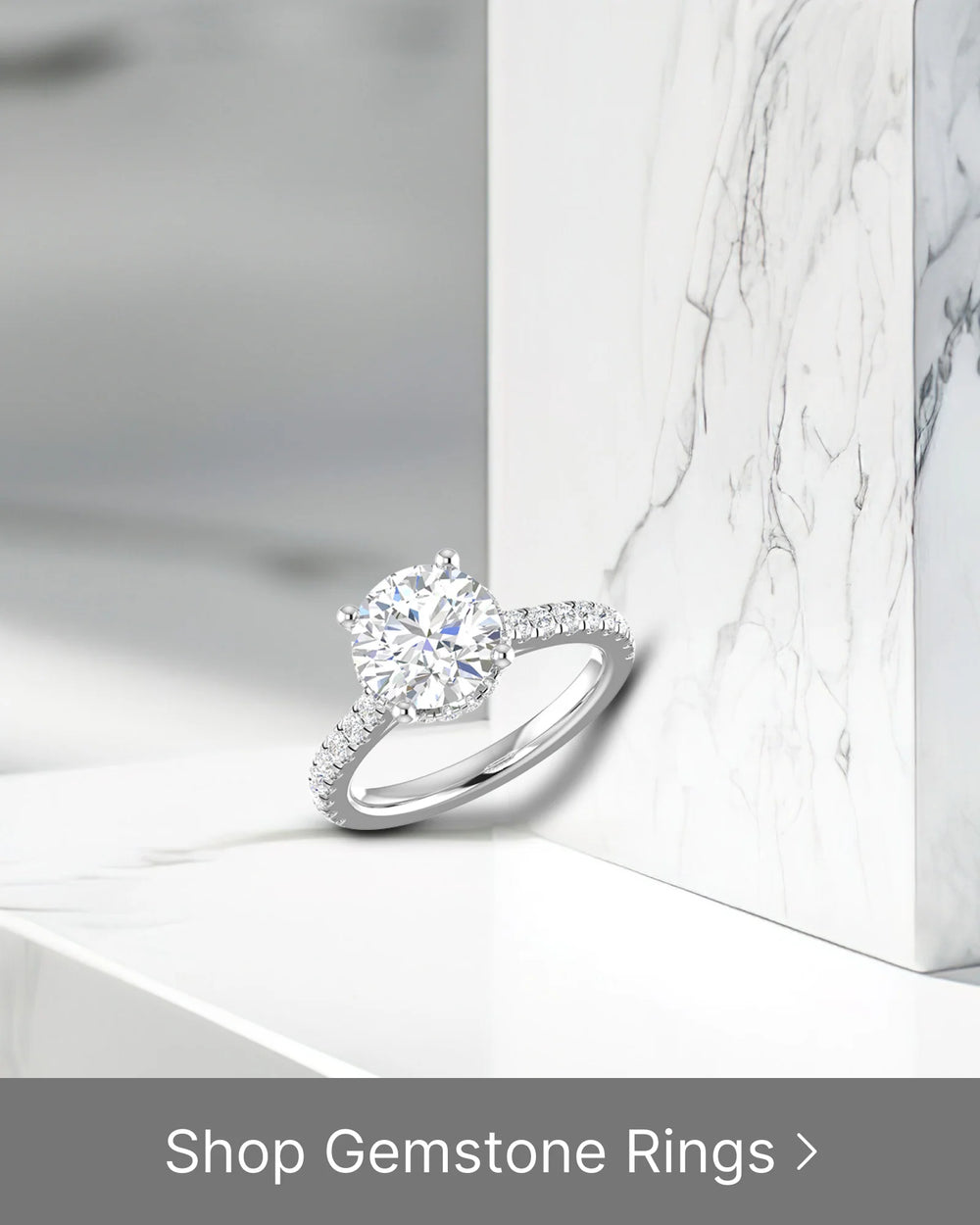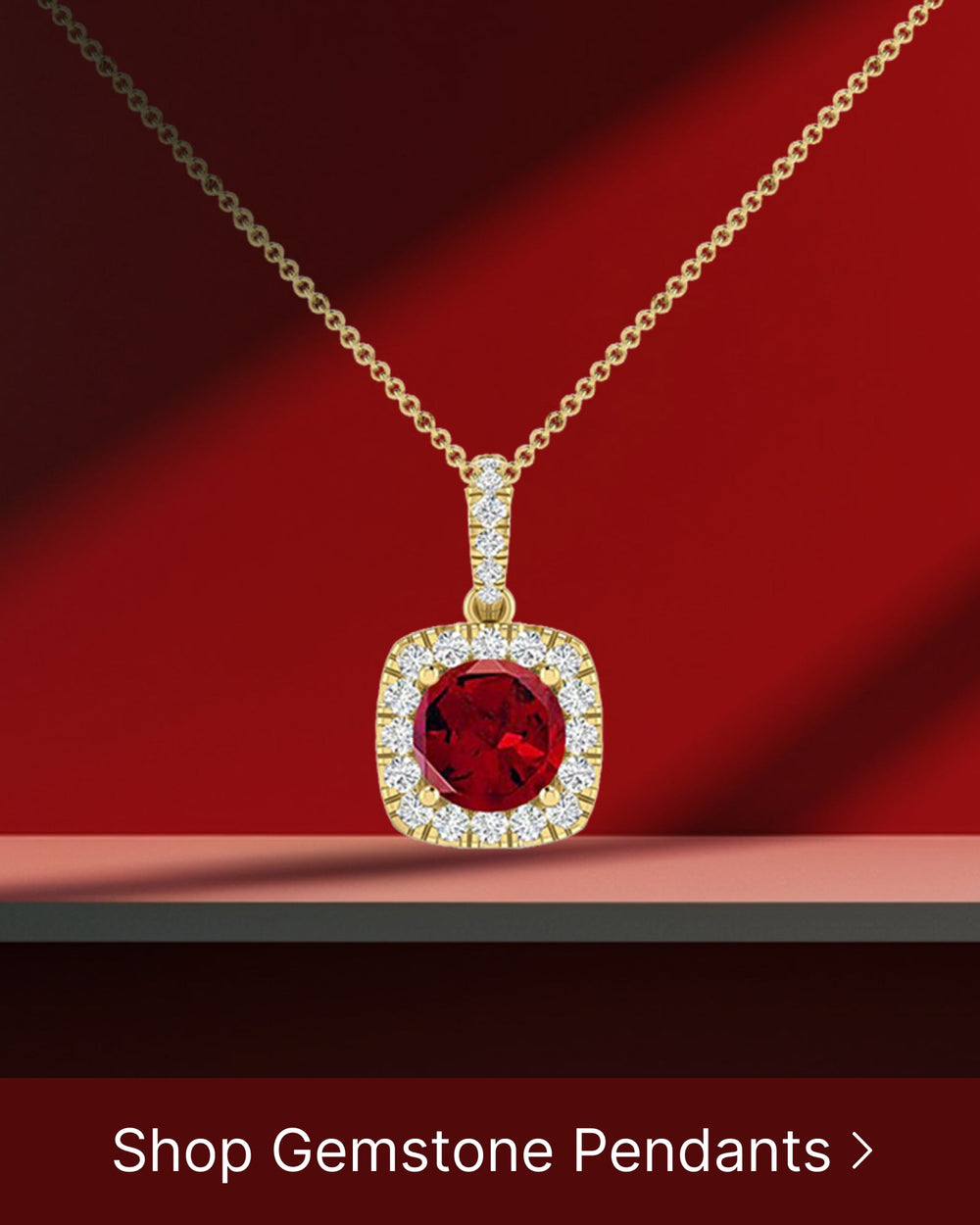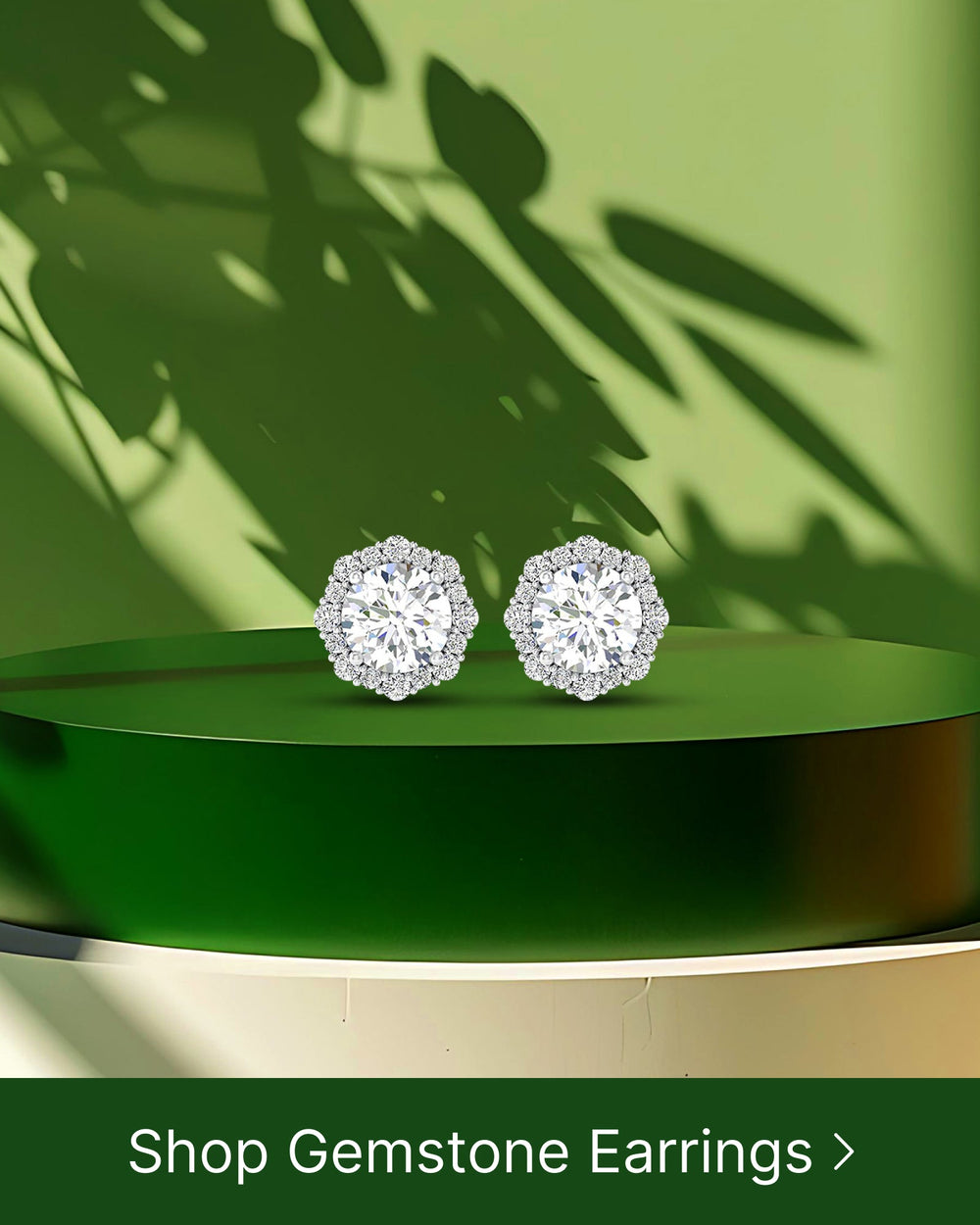When it comes to purchasing a moissanite, understanding the factors that influence its price is essential. In this article, we will explore the basics of moissanite, examine the various factors that affect its price, compare it to other gemstones, offer tips for buying moissanite, and discuss the future of its prices.
The Basics of Moissanite
What is Moissanite?
Moissanite is a gemstone that closely resembles a diamond but is composed of silicon carbide. It was first discovered by the French chemist Henri Moissan in 1893 while examining a meteorite crater in Arizona. Moissanite is named after its discoverer, and its unique properties have made it a popular choice for jewelry enthusiasts.
When Moissan first discovered the gemstone, he initially thought he had found diamonds. However, further analysis revealed that it was an entirely new mineral. Moissanite has a similar brilliance, fire, and hardness to diamonds, making it an attractive alternative for those seeking a more affordable option.
Moissanite's chemical composition gives it exceptional durability, making it resistant to scratches and chips. This durability, combined with its affordability, has made moissanite a favorite among jewelry designers and buyers.
The History of Moissanite
Since its discovery, moissanite has gone through significant developments. Initially, it was only found in minute quantities in meteorites. However, scientists discovered a way to create moissanite in a laboratory, making it more accessible and affordable for jewelry lovers.
As technology advanced, researchers found methods to produce larger and higher-quality moissanite crystals. This breakthrough allowed for the creation of stunning moissanite gemstones that rival the beauty and brilliance of diamonds.
Throughout the years, moissanite has gained recognition as an excellent substitute for diamonds due to its durability and stunning beauty. Its demand has continued to rise, leading to a diverse range of moissanite jewelry options available in the market.
Today, moissanite is not only used in engagement rings and other fine jewelry but also in various fashion accessories. Its versatility and affordability have made it a popular choice for those who want to make a statement without breaking the bank.
Furthermore, moissanite's ethical and sustainable nature has also contributed to its growing popularity. Unlike diamonds, which often come with ethical concerns related to mining practices, moissanite is created in a controlled laboratory environment, ensuring its origin and minimizing environmental impact.
As technology continues to advance, we can expect further innovations in moissanite production, leading to even more stunning and affordable options for jewelry enthusiasts worldwide.
Factors Influencing Moissanite Prices
When it comes to purchasing a moissanite, there are several factors that can influence its price. Understanding these factors can help you make an informed decision and find the perfect moissanite within your budget.
Size and Carat Weight
One of the primary factors that determine the price of moissanite is its size and carat weight. Similar to diamonds, moissanite is priced based on its weight, with larger stones generally commanding a higher price. However, unlike diamonds, moissanite offers a relatively more affordable option for those who desire a larger gemstone.
For example, a one-carat moissanite will typically be more affordable than a one-carat diamond. This makes moissanite an attractive choice for those who want a larger stone without breaking the bank.
Color and Clarity
Moissanite is available in a range of color grades, which play a role in determining its price. Higher-grade colorless moissanite can closely resemble a diamond and tends to be more expensive. On the other hand, moissanite with a slight tint may have a lower price point.
When it comes to clarity, moissanite is known for its excellent clarity due to its lab-grown nature. However, the presence of inclusions or flaws can affect the price. Generally, moissanite with higher clarity grades will command a higher price.
It's important to note that the color and clarity of moissanite can greatly impact its overall appearance. Choosing a color and clarity grade that suits your preferences and budget is crucial in finding the perfect moissanite.
Cut and Shape
The cut and shape of moissanite also contribute to its price. A well-cut moissanite will maximize its brilliance and fire, enhancing its overall beauty. Popular shapes such as round brilliant and princess cuts are generally more expensive due to their demand, while less common cuts may have a lower price.
Additionally, the complexity of the cut can impact the price. Intricate cuts and fancy shapes may require more labor and expertise, resulting in a higher price tag. It's important to consider the cut and shape that best suits your personal style and preferences.
By considering the factors mentioned above, you can make an informed decision when purchasing a moissanite. Whether you prioritize size, color, clarity, or cut, there is a moissanite out there that will meet your desires and budget.
Comparing Moissanite to Other Gemstones
Moissanite vs. Diamond
When comparing moissanite to diamonds, there are several key distinctions to consider. While diamonds are naturally occurring gemstones, moissanite is lab-created. This difference in origin contributes to the significant price disparity between the two. Moissanite offers a more budget-friendly option without compromising on brilliance and durability.
But let's delve deeper into the fascinating world of diamonds. Diamonds are formed deep within the Earth's mantle, under immense pressure and heat. It takes millions of years for carbon atoms to crystallize and create the mesmerizing gemstones we know and love. Each diamond is unique, with its own set of inclusions and imperfections, which add to its character and value.
On the other hand, moissanite is a relatively recent discovery. It was first found in a meteorite crater in Arizona in 1893 by French chemist Henri Moissan. The gemstone was later named after him to honor his contribution to the field of science. While moissanite is lab-created, it still possesses the same optical properties that make diamonds so captivating.
Moissanite's brilliance and fire are comparable to that of diamonds, thanks to its high refractive index. This means that when light enters the gemstone, it bends and reflects back, creating a dazzling display of colors. Whether you choose a moissanite or a diamond, both will captivate onlookers with their radiant sparkle.
Moissanite vs. Cubic Zirconia
Another popular diamond alternative is cubic zirconia (CZ). However, moissanite stands out due to its superior hardness and brilliance. Unlike CZ, which can easily scratch and dull over time, moissanite maintains its luster and durability, making it an ideal choice for everyday wear.
But let's take a moment to explore the intriguing history of cubic zirconia. CZ was first synthesized in a laboratory in 1976, and its optical properties were found to closely resemble those of diamonds. This discovery led to the mass production of CZ, providing an affordable alternative to natural gemstones.
However, despite its affordability, cubic zirconia falls short when it comes to durability. Over time, CZ can become scratched and lose its brilliance, requiring frequent maintenance to keep it looking its best. Moissanite, on the other hand, is known for its exceptional hardness, ranking at 9.25 on the Mohs scale. This makes it highly resistant to scratching and ensures that it will maintain its beauty for years to come.
Furthermore, moissanite's refractive index is closer to that of diamonds, resulting in enhanced sparkle and fire. Its optical properties allow light to enter the gemstone and bounce back with incredible intensity, creating a mesmerizing play of light. Ultimately, when comparing moissanite to cubic zirconia, its higher price is justified by its remarkable qualities.
In conclusion, whether you choose moissanite, diamond, or cubic zirconia, each gemstone has its own unique characteristics and allure. From the natural beauty of diamonds formed deep within the Earth to the lab-created brilliance of moissanite and the affordability of cubic zirconia, there is a gemstone to suit every taste and budget.
Buying Moissanite: Tips and Considerations
Understanding Moissanite Grading
Before making a purchase, it is crucial to understand the grading system used for moissanite. The Gemological Institute of America (GIA) grades moissanite based on color, clarity, cut, and carat weight. Familiarizing yourself with these grading criteria will help you assess the quality and value of a moissanite stone.
Choosing a Reputable Moissanite Seller
When buying moissanite, it is essential to choose a reputable seller. Look for sellers who provide certifications and guarantees, ensuring the authenticity and quality of their moissanite. Reading customer reviews and seeking recommendations from trusted sources can also help you make an informed decision.
The Future of Moissanite Prices
Market Trends and Predictions
The growing popularity of moissanite as a diamond alternative suggests a promising future for its prices. As more consumers become aware of its quality and affordability, the demand for moissanite is expected to rise. This increase in demand may impact its prices, potentially making it a sought-after gemstone.
Sustainability and Moissanite
In addition to its aesthetic appeal, moissanite's eco-friendly nature contributes to its growing popularity. Unlike diamonds, which are often associated with unethical mining practices, moissanite is a sustainable gemstone. As consumers become more conscious of their choices, the demand for sustainable alternatives like moissanite may further drive its prices.
In conclusion, moissanite prices are influenced by various factors such as size, color, clarity, cut, and shape. When compared to other gemstones like diamonds and cubic zirconia, moissanite offers a unique combination of affordability, durability, and brilliance. By understanding moissanite grading and purchasing from reputable sellers, buyers can ensure they are getting a high-quality stone at a fair price. As the market for moissanite continues to expand and sustainability gains importance, its future prices are expected to remain steady or potentially increase.





